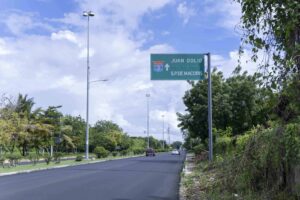Papua New Guinea’s National Disaster Center says more than 2,000 people were buried by the large avalanche that devastated a remote town in the country’s north early Friday.
According to a letter from the center dated Sunday and sent to the coordinator of the United Nations (UN) in the country, to which the EFE news agency had access this Monday, “more than 2,000 people were buried alive” by the “massive avalanche” occurred near the Porgera gold mine, in the province of Enga, in the north of the country.
The avalanche, which occurred on Friday at 3 a.m. (17:00 GMT on Thursday), “caused great destruction of buildings and gardens and has generated a great impact on the economic support of the country,” the letter states, adding that The main access road to the Porgera mine “is completely blocked.”
“The situation remains unstable as the landslide continues slowly, which still poses a danger to rescue teams and survivors,” the letter underlines. UN sources consulted by EFE report the difficulty of accurately determining the number of fatalities and missing persons due in part to the laborious rescue operation due to the instability of the terrain and the difficult access to the area.

Figures from Sunday from the International Organization for Migration (IOM), which has six workers in the disaster area, estimated the number of houses at 150 and those buried under the avalanche at 670, with “hopes of finding them alive fading.” . The avalanche has also displaced about 1,000 people, according to this agency.
The collapse of part of a mountain early Friday morning impacted the town of Kaokalam, about 600 kilometers from the country’s capital, Port Moresby, burying homes in a layer between six and eight meters deep.
The affected area usually suffers from intense rains and flooding, and landslides are not unusual in the country, where, despite the wealth of natural resources, a large part of its more than nine million inhabitants live in extreme poverty and It is isolated due to a lack of communications and infrastructure, especially in remote places like the current catastrophe.
Papua New Guinea sits on the so-called Pacific Ring of Fire, an area of great seismic and volcanic activity that is shaken by about 7,000 earthquakes a year, most of them moderate.




